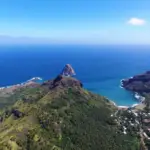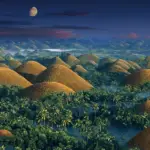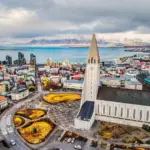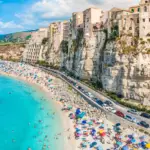Exploring the Majesty of the Masai Mara

The Majestic Presence of the Masai Mara: An Unparalleled Natural Treasure
THE Maasai Mara, located in southwestern Kenya, is one of the most renowned and stunning wildlife reserves in the world. Covering approximately 1,510 square kilometers,, the national park attracts visitors from all over for its rich biodiversity and remarkable landscapes. Located in the Rift Valley Region and bordering Tanzania, the Masai Mara is an integral part of the greater Serengeti-Mara ecosystem, which covers over 25,000 square kilometers.
The importance of this region cannot be understated, as it plays a vital role in wildlife conservation and the balance of African ecosystems. The true splendor of the Masai Mara lies in its diverse natural beauty.
The varied landscape includes vast open plains, rolling hills covered in golden grass, and dense riverine forests along the Mara and Talek rivers. This variety of habitats supports a wide variety of flora and fauna, creating a spectacular setting for nature observers.
The Stunning Geography of the Masai Mara
The Masai Mara is a breathtaking region located in southwestern Kenya, bordering Tanzania. It covers approximately 1,510 square kilometers and is world-renowned for its stunning beauty and abundance of wildlife.
The unique topography of the national park It features a fascinating blend of savannas, hills, forests, and winding rivers that contribute to the region's exceptional ecological diversity. The Masai Mara landscape is dotted with small rocky outcrops known as kopjes, which provide shelter for a variety of animals and offer stunning panoramic views of the reserve's vastness.
Furthermore, the park is crossed by the Mara and Talek rivers, which not only provide vital water for locals but also serve as important wildlife gathering spots during the drier seasons. Amidst this varied geography, visitors have the unique opportunity to explore different ecosystems in a single destination.
The Vibrant Climate: An Ever-Changing Stage for Wildlife
The climate in the Masai Mara is incredibly diverse and plays a key role in the region's ecology. The park experiences two distinct seasons—a dry season and a wet season—each with its own unique characteristics that affect wildlife in different ways. During the dry season, which generally occurs between June and October, the park transforms into an arid, dusty landscape.
This pushes herbivores like zebras and wildebeest into greener areas in search of fresh pasture. Predators also have an easier time hunting during this time, as the lower vegetation makes visibility easier and the animals are under greater stress due to scarce resources.
The rainy season, on the other hand, occurs between November and May. During this period, abundant rainfall transforms the park into a lush green sea that attracts a myriad of animals in search of abundant food.
Fresh pastures are essential for the migratory herds of wildebeest and zebra, which arrive in the Masai Mara in impressive numbers during this period. It's a magnificent spectacle to witness this massive movement of wildlife when the rivers overflow and the plains are filled with a profusion of vibrant colors.
Exceptional Wildlife in the Masai Mara
Spotlight on the Famous “Big Five”
The Masai Mara is widely known as a sanctuary for African wildlife, home to an incredible variety of species. Among them, the famous “Big Five” – the lion, the leopard, the elephant, the buffalo and the rhinoceros. These majestic creatures reign supreme in this region and are emblematic symbols of the richness and biodiversity of the Masai Mara.
Lions dominate the park's landscape with their imposing presence and courage. Observing them in their natural habitat is a truly exciting experience.
Furthermore, the leopard's camouflage ability allows it to move silently through the trees while hunting its prey. Elephants, with their immense strength and intelligence, captivate viewers by revealing their complex social behaviors.
Buffaloes display a powerful and fearless nature as they roam the vast plains of the Masai Mara in large herds. Last but not least, the rhinoceros portrays the resilience and determination of wildlife in the face of extinction threats.
Other Iconic Animals Found in the Masai Mara
Besides the "Big Five," the Masai Mara is home to many other fascinating creatures that contribute to the region's rich wildlife tapestry. The majestic giraffes, with their long, graceful necks, move elegantly through the trees in search of succulent leaves.
Striped zebras roam the plains, creating a stunning visual contrast with the lush green landscape. However, one of the most impressive spectacles occurs during the annual wildebeest migration.
Hundreds of thousands of these courageous animals cross the Masai Mara in search of fresh pasture and abundant water. The sight of a herd in motion is truly spectacular and evokes a unique sense of awe.
In this diverse ecosystem, you can also find a multitude of exotic birds that fill the sky with their vibrant colors and melodic songs. From majestic vultures to elegant pink flamingos, the Masai Mara sky teems with winged life that delights birdwatchers and African wildlife enthusiasts alike.
Faced with this impressive variety of wildlife in the Masai Mara, it's impossible not to be awed by the perfect harmony and balance found in this unique ecosystem. Each creature plays a vital role in nature's complex web, creating an incomparable spectacle that will surely inspire and captivate all those fortunate enough to witness this wild beauty.

The Fascinating Annual Wildebeest Migration
The annual migration of the great wildebeest herds in the Masai Mara is an incredible spectacle of nature. Every year, approximately 1.5 million wildebeest, accompanied by zebras and gazelles, begin their epic journey in search of fresh pastures and water.
This migration covers a distance of approximately 800 km, involving crossing the Mara River and facing numerous challenges along the way. This migration phenomenon is a true example of wildlife adapting to unpredictable nature.
During the dry season, when the pastures of the Serengeti (Tanzania) become scarce, the herds begin their journey towards the Masai Mara (Kenya), where the rains bring abundant vegetation. This migration is influenced by the animals' instincts for food and the survival needs of the species involved.
Challenges in Crossing the Mara River
The Mara River crossing is the most dangerous and exciting part of the annual wildebeest migration in the Masai Mara. The river is teeming with hungry crocodiles, eagerly awaiting their opportunity when the animals attempt to swim to the opposite bank. This crossing is fraught with tension and intense emotion, as the wildebeest must overcome fear and the constant threat of being attacked by crocodiles.
Meanwhile, lions and other predators also wait anxiously on the banks, ready to seize any hunting opportunity. Crossings can be chaotic and adrenaline-fueled.
Animals gather along the riverbanks, hesitant to face the dangers that await them. The deafening sound of wildebeest bellows echoes across the landscape as they summon the courage to leap into the turbulent water.
As they advance, the struggle for survival is evident—some are attacked by crocodiles, others are swept away by dangerous currents, or fall amidst the tumult of the crowd. However, those who successfully cross experience a sense of triumph and relief upon reaching safer ground.

Traditional Maasai Culture: A Fascinating Portrait of Ancient Traditions
Preserving Roots: A Brief History of the Maasai People
Maasai culture dates back centuries, when these nomadic people settled in the Rift Valley region of Kenya and Tanzania. With a rich and deeply rooted history, the Maasai are known for their resilience and intimate connection with the land. For generations, they have lived in harmony with nature, maintaining ancient traditions that reflect their intrinsic values.
The Maasai are a warrior and pastoralist people whose livelihood depends primarily on cattle raising. They have a strong sense of community and live in small villages known as "bomas."
Maasai society is organized around family clans and led by wise elders who play a central role in important decisions. Despite the modern influences that have impacted their culture over the years, the Maasai have striven to preserve their traditions.
They value their distinctive clothing, such as handmade beaded necklaces with vibrant colors that represent sacred symbols of nature. Furthermore, the traditional dance known as "adumu" is a form of artistic expression that plays a central role in Maasai celebrations and rituals.
An Evolving Culture: The Impact of Modernity on the Maasai
Maasai culture has faced significant challenges in the face of the growing influence of the modern world. Urbanization, tourism, and climate change have profoundly affected these people's traditional way of life. The pressure to adapt to new livelihoods and the growing need for education have forced the Maasai to balance their traditions with the demands of the contemporary world.
Yet, despite these challenges, it's inspiring to see how resilient the Maasai have been in their pursuit of cultural preservation. They have worked to find a balance between past and present, cherishing their ancestral heritage without losing their unique identity.
Today, many Maasai have found opportunities in the tourism industry, sharing their culture with visitors interested in learning about their traditional way of life. This has allowed the Maasai to become ambassadors of their own traditions and have control over how they are represented.
The Maasai Cultural Legacy: An Enduring Inspiration
The Maasai culture is a priceless cultural treasure that deserves to be celebrated and preserved. Their unique identity, marked by rituals, traditional dress, and a deep connection with nature, is an inspiration worldwide. By exploring the Maasai Mara, visitors have the opportunity to experience this rich cultural heritage firsthand.
Interacting with the Maasai, learning about their ancient traditions, and witnessing their warm hospitality provides a transformative experience that reminds us of the importance of valuing indigenous cultures. Ultimately, by recognizing and respecting Maasai culture, we are contributing to the preservation of this precious cultural legacy.
By supporting sustainable initiatives that benefit Maasai communities, we can help ensure their traditions are kept alive for future generations. Maasai culture is a true example of how to honor our ancestors and keep our collective history alive.
Lucas Wanderlust has a tireless spirit of adventure, always seeking new travel experiences. Fascinated by the world and the possibility of exploring unknown destinations, he fell in love with the sense of freedom and self-discovery that traveling alone provides. With a backpack on his back and a heart open to the unknown, Lucas embarks on exciting journeys, where each destination becomes a unique chapter in his life story. He gives himself body and soul to the magic of solo travel, inspiring others to follow in his footsteps and discover themselves through adventure.







